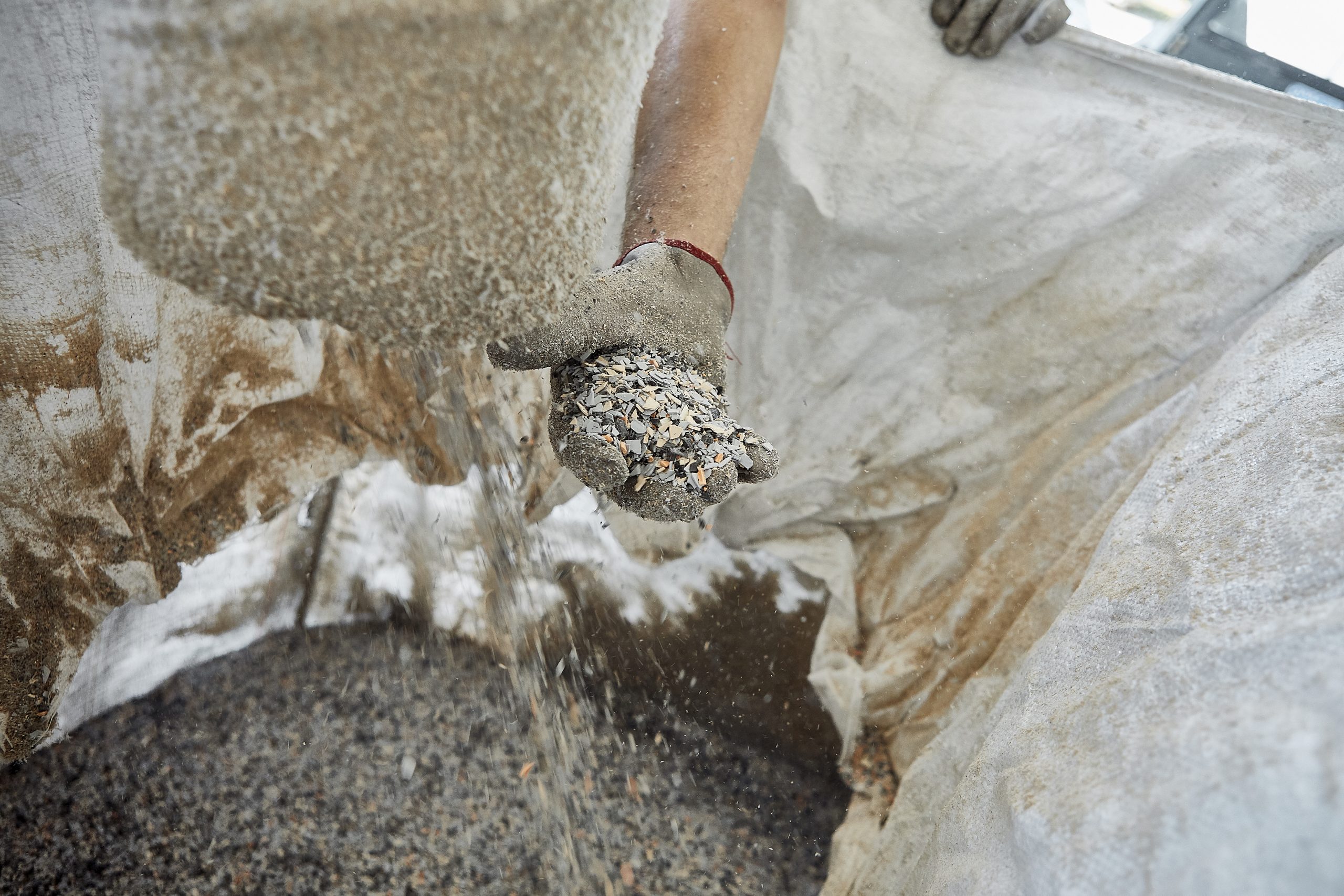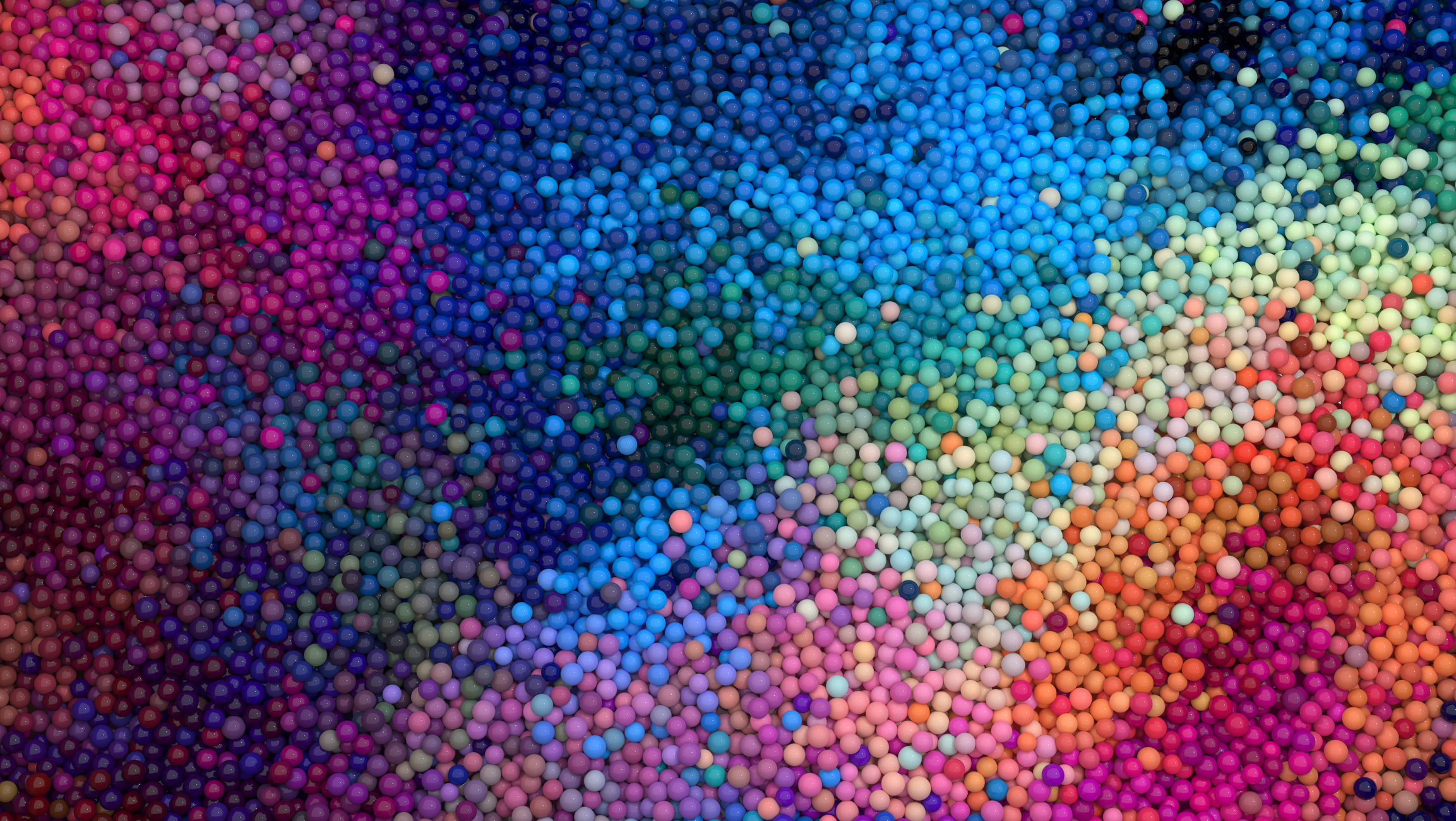
anecdotes and developments, from discovery to the present day
Plastic, or rather plastic materials, have pervaded our lives because they are extremely versatile and have unique characteristics. There is no aspect of our daily activities that does not involve the use of plastic: from shopping bags to washing machines, from clothes to cars, to drinks bottles. The list is endless.
But why has plastic been so successful over the years? Let’s start at the beginning: plastic comes from the Greek “plastikos”, which means suitable for moulding.
Plastic materials are in fact fully malleable during production, and can be formed into any shape.
The history of plastic began between 1861 and 1862, when during his studies on cellulose nitrate Englishman Alexander Parkes isolated and patented the first semi-synthetic plastic material, which he named Parkesine (later better known as xylonite). But for plastic, the first real breakthrough came a few years later, when in 1870 the American Hyatt brothers patented the celluloid formula, with the aim of replacing expensive and rare ivory in the production of billiard balls.
The early years of the 20th century saw the emerging of other plastic materials: Bakelite, PVC and cellophane. But it was the 1930s that marked the real turning point: oil became the starting raw material for its production and processing techniques improved and were adapted to mass production, starting with moulding.
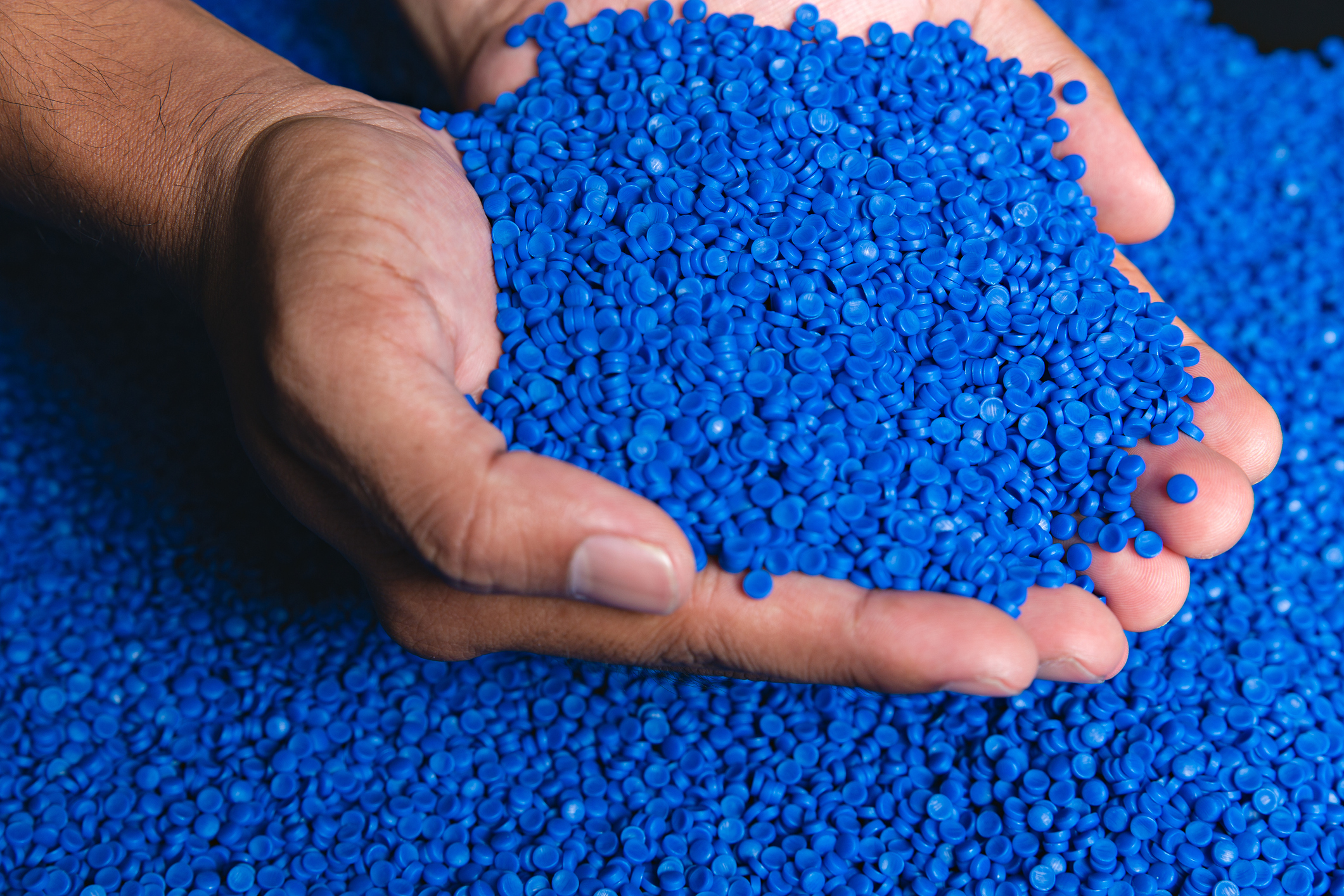
the 1950s
The 1950s brought the discovery of melamine-formaldehyde resins, which made it possible to produce laminates for furniture and low-cost tableware, while synthetic fibres (polyester, nylon) became increasingly popular as modern, practical and cheaper alternatives to natural fibres. Those years were characterised by the rise of polyethylene – which was not fully established until two decades after its invention -, with a higher melting point that enabled it to be exploited for applications that before were unthinkable, and by Giulio Natta’s discovery in 1954 of isotactic polypropylene, which in 1963 won him the Nobel Prize together with the German Karl Ziegler. Polypropylene began to be produced industrially in 1957 under the brand name Moplen, revolutionising homes all over the world and becoming part of the Italian myth of the “economic boom”.
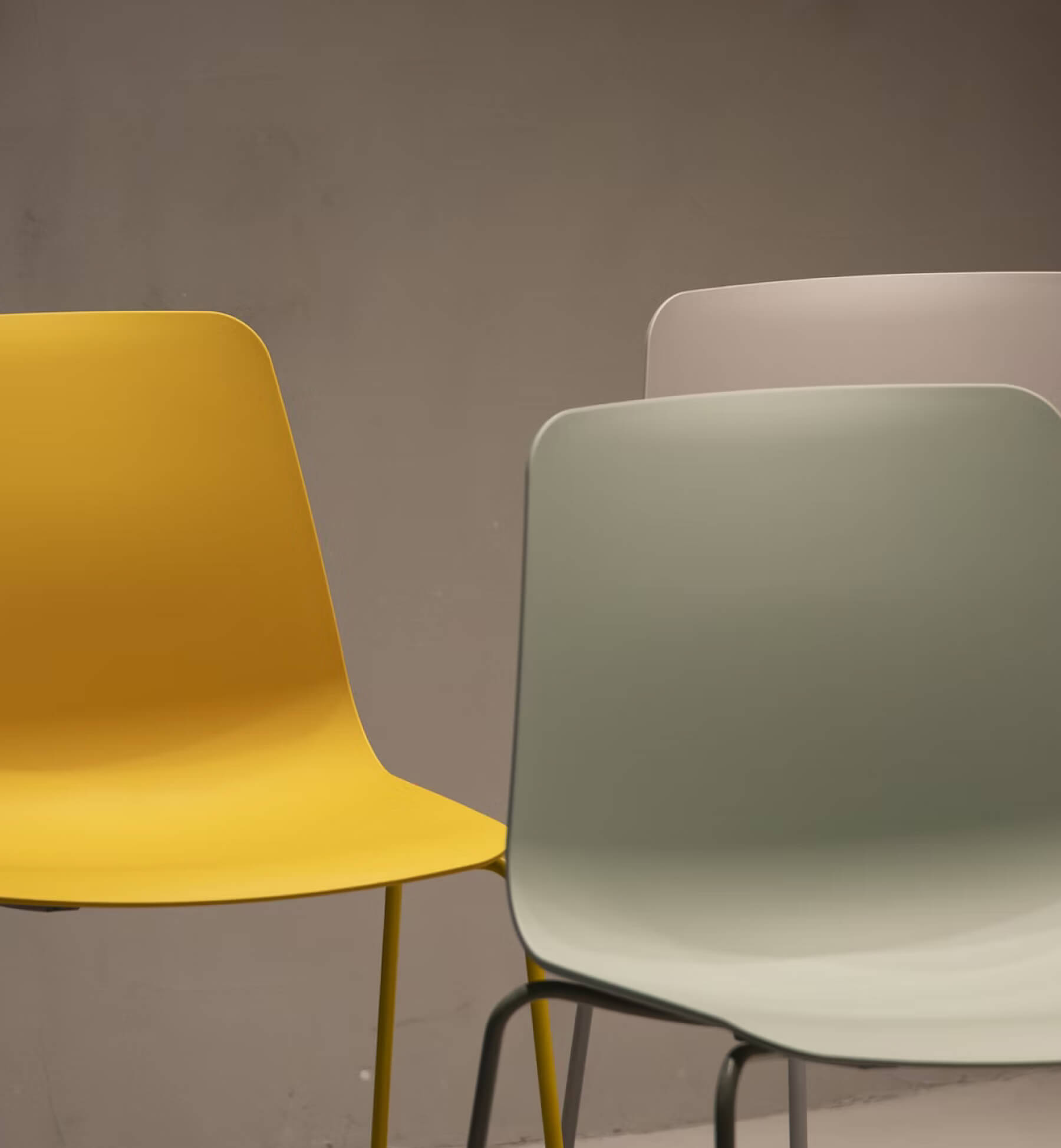
from the 1960s to today
The 1960s saw the definitive establishment of plastic as an irreplaceable tool in everyday life, and as a new frontier in fashion, design and art. Plastic burst into the daily lives and the imagination of millions of people. It became a fixture in kitchens and living rooms, giving the masses access to products previously reserved for the privileged few, simplifying gestures, colouring homes, revolutionising habits established over centuries and helping to create the modern lifestyle.
Since then, the race to discover plastic materials has never stopped: the development of technopolymers, which have both thermal and mechanical resistance characteristics that are still partly unexplored, has led to strong technological growth and a continuous affirmation for increasingly sophisticated and unimaginable applications.

The entrepreneurial adventure of FITT in the world of plastic dates back to 1969, when Rinaldo Mezzalira founded Viplast, a company specialising in PVC processing, which later on became Fabbrica Italiana Tubi e Trafilati, or FITT. 53 years have passed since then, and FITT is now in its second generation led by Alessandro Mezzalira, has more than 100 registered patents, 9 production plants and almost 1000 employees. Its products are exported to 90 countries worldwide and are used in the domestic, industrial, professional and construction sectors.
Continuous research into innovative materials has led to the creation of products that have revolutionised the markets and set new quality standards: such as the NTS technology, which prevents the formation of kinks and knots, the patented Chlorine Defence System (CDS) for swimming pool hoses, Acua, the first phthalate-free hose with FCU (Food Contact Use) patent, Native, the first PVC-free hose, the FITT Bluforce system made from PVC-A, FITT Force, the compact and lightweight garden hose that brings together two separate technologies, NTS and HD Tech. And many more.
It’s on the study of transformation processes, material research and the development of new technopolymers, both at its own laboratories and in partnership with research centres and universities, that FITT bases its business strategy, with the aim of finding innovative solutions capable of meeting the environmental challenges of today and the future.
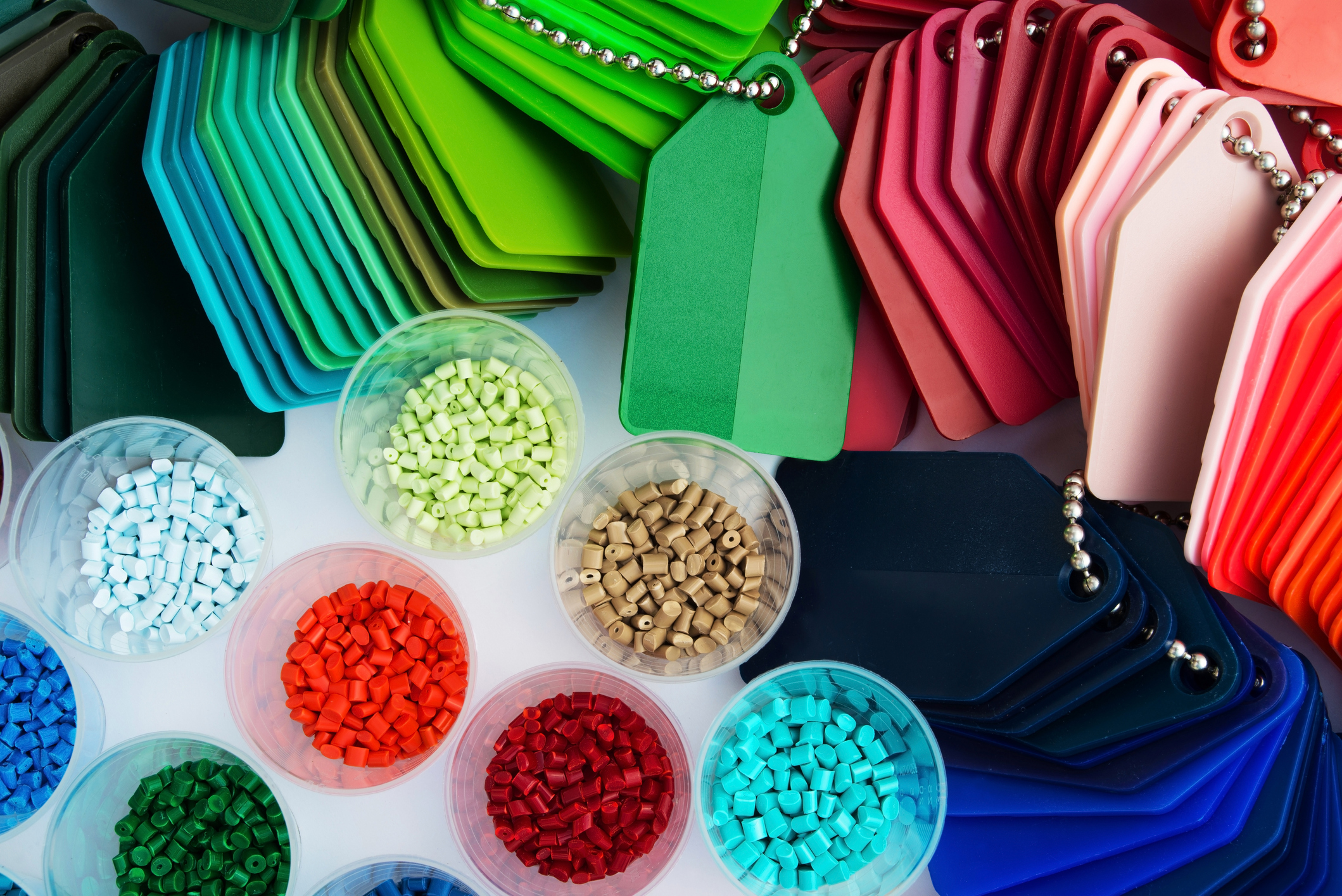
Plastic has unique characteristics and is extremely versatile: it can be used in areas where its function is exhausted in a few days (packaging) but also in applications where its performance must be guaranteed for more than 50 years (buildings).
Plastics are a plural reality, which is why it is more correct to speak of plastics rather than plastic: i.e. a wide variety of polymers, each with their own distinctive characteristics, properties and fields of application.
Following the DIN 7728 and 16780 standards, as well as the ISO 1043/1 international standards, each plastic material is assigned a unique identification code.
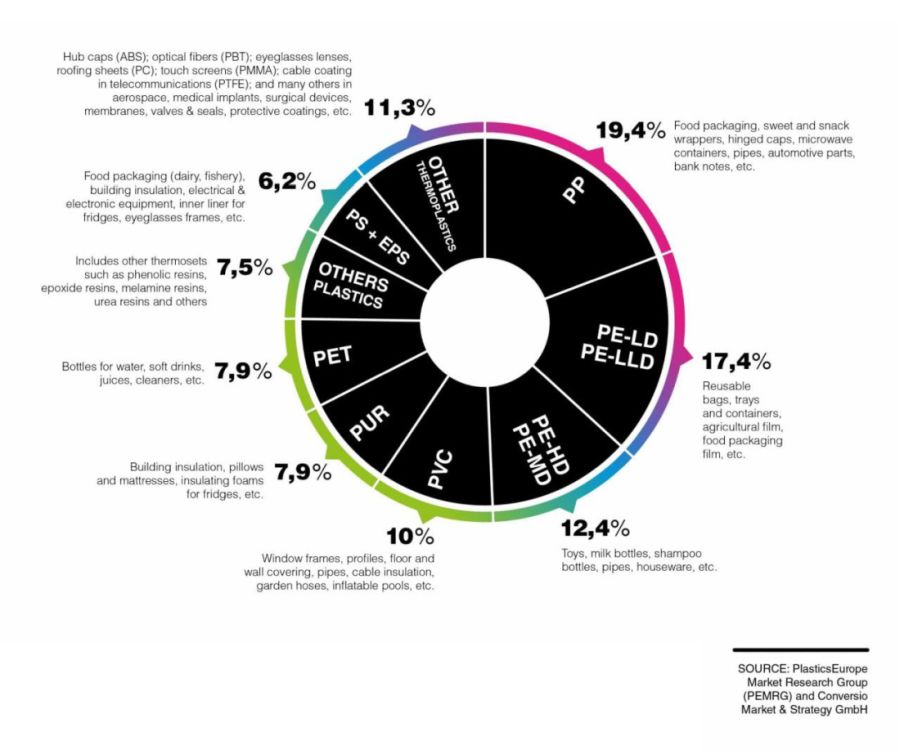
Thermoplastic materials are a family of plastics that can be melted when heated and can be hardened when cooled. These properties are reversible, which means that thermoplastic materials can be reheated, formed and hardened. Examples of thermoplastic materials are polyethylene, polypropylene, polycarbonate, polybutylene terephthalate, polyamides, etc.
Thermosetting materials are a family of plastics that undergo a chemical change when heated, creating a three-dimensional structure. After being heated and formed, these plastics cannot be melted and formed again.
Examples of thermosetting materials are polyurethane, silicone, methacrylic resin, vinylester, etc.
60% of plastics are used in two sectors: packaging (39.6%) and construction (20.4%)
The third sector with the highest demand for plastics is the automotive sector (9.6%).
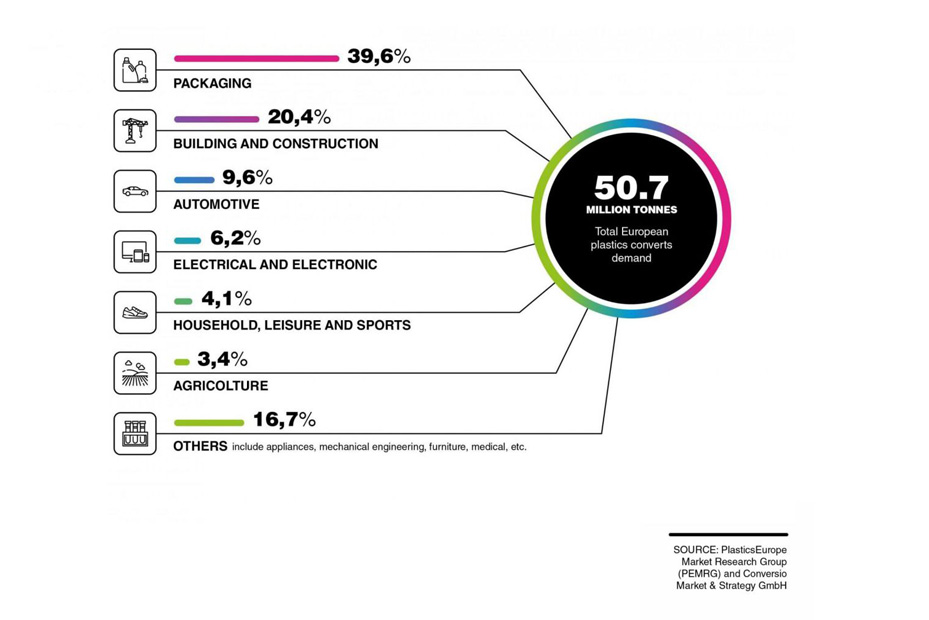
For more than 50 years, FITT has been manufacturing pipes, hoses and systems for the flow of liquid, gaseous and solid substances for various application sectors: gardening, swimming pools, construction, nautical, infrastructures and much more.
Each solution is designed for maximum performance in terms of durability, yield and operability, and is manufactured with a specific chemical formula that entails the use of certain types of plastic.
PVC, polyolefins (polypropylene and polyethylene) and thermoplastic elastomers are the types most commonly used by FITT for its products.
Thanks to its resistance to mechanical stress in both hot and cold conditions, its intrinsic non-flammability and the fact that it can be specifically formulated for contact with drinking water and chemically aggressive substances, rigid PVC is used in the production of pipelines for construction, sewage and waterworks applications.
The high flexibility, weather resistance and versatility of flexible PVC make it ideal for the production of hoses for technical, liquid foods and gardening applications.
In addition, in both its rigid and flexible form, PVC is easily recyclable: it can be reused in production processes to generate new products, eliminate waste and reduce environmental impact.
These special hybrid blends of rubber and polypropylene include styrene-based and pre-vulcanised rubber-based thermoplastic elastomers (TPE). The former are particularly suitable for transporting drinking water and liquid foods, while, together with thermoplastic polyurethane elastomers (TPU), the latter are ideal for medium-heavy-duty applications requiring anti-abrasive properties and resistance to prolonged mechanical stress at higher temperatures.
Ethylvinyl acetate (EVA) , another thermoplastic elastomer, is used in two different applications: due to its low density, which allows it to float, it is used in swimming pool cleaning pipelines , while its transparency and ability to contain the heat generated inside the greenhouse by the sun rays, make it suitable for the manufacturing of greenhouse films.
Finally, polyester is widely used in the textile reinforcement of hoses. PET yarns can be easily bonded to all plastics, and thanks to their strength they guarantee the pressure resistance of hoses.

Due to its light weight, chemical resistance properties and the possibility of being made fireproof, antibacterial and antistatic, polyethylene is also widely used in the production of pipelines for the construction industry, although in less demanding applications.
Thanks to its chemical inertness and ease of bonding with thermoplastic elastomers, polypropylene is ideal as a structural material in spiral hoses for technical and food applications.
Thermoplastic elastomers represent the new frontier for technical hoses and garden hoses: on the one hand, they retain the thermoplastic aspects that make them completely recyclable; but also, they can achieve resistance and elasticity characteristics comparable to those of rubber.
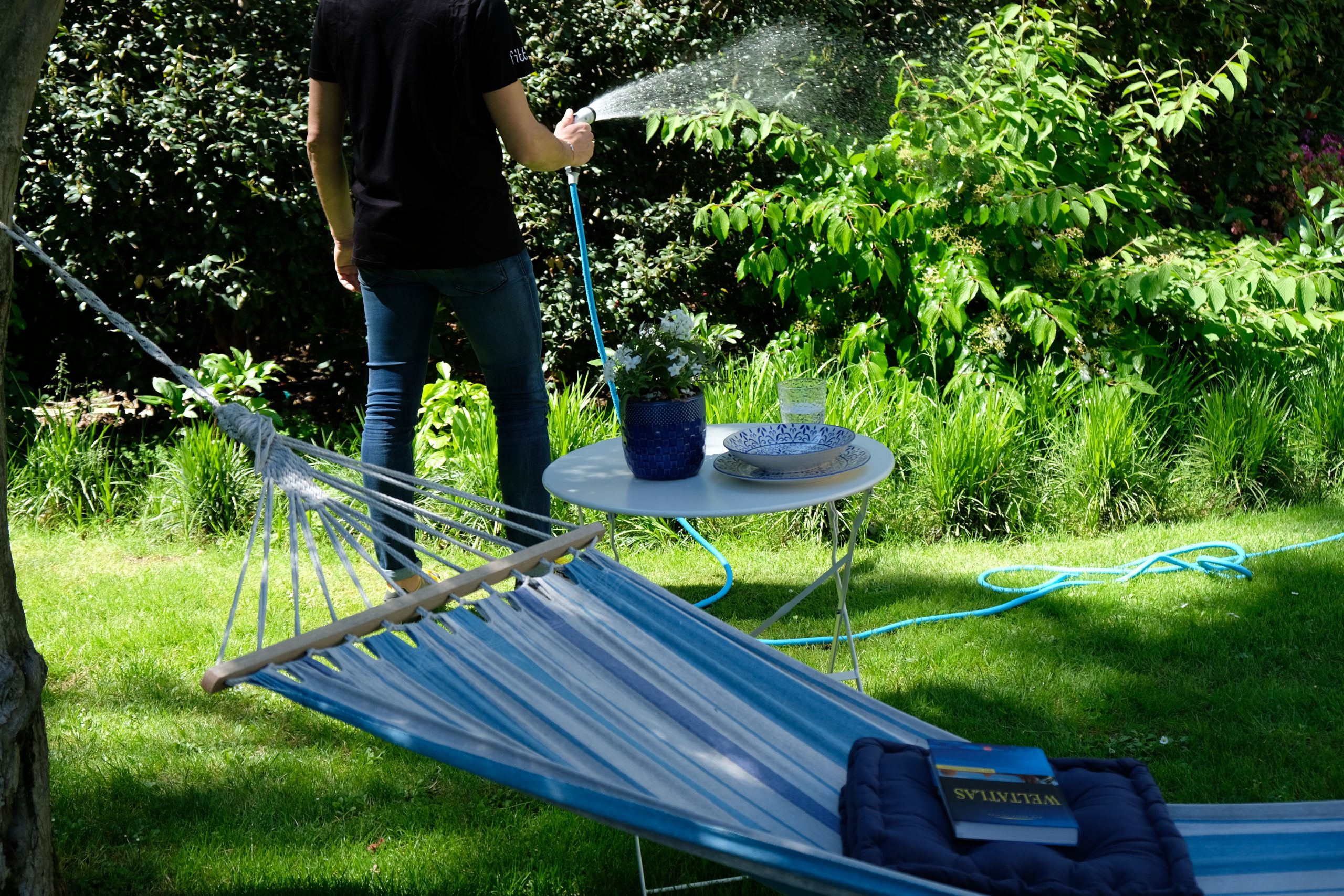
from waste recycling to the circular economy
Plastics will therefore continue to shape our present and our future. But only when we will be able to overcome the global challenges related to the negative impact caused by their dispersion in the environment, will we be able to exploit the full potential of these materials.
This is why it is necessary to create a plastic value chain, starting with the proper recycling of waste and leading to the circular economy, and which can continue to provide benefits to society, whilst at the same time having a positive impact on the environment.
Nowadays, 60% of plastic products and components have a period of use that goes from 1 to 50 years or more.
This time frame determines when they will potentially become waste.
This is why the amount of plastic waste collected in one year does not match the production or consumption quantities for the same period.
29.1 million tonnes of plastic waste were collected in Europe in 2018. Of this quantity, 32.5% was recycled, 42.6% went to incineration plants, and 24.9% went to landfill.
From 2006 to 2018, the amount of plastic going to landfill decreased by 44%, while the amount going to incinerators increased by 77%, and the amount recycled increased by 100%.
Europe has decided to pursue the target of zero waste to landfill for recyclable materials such as plastic by 2030. This will lead EU countries to further develop and increase their support for the circular economy.
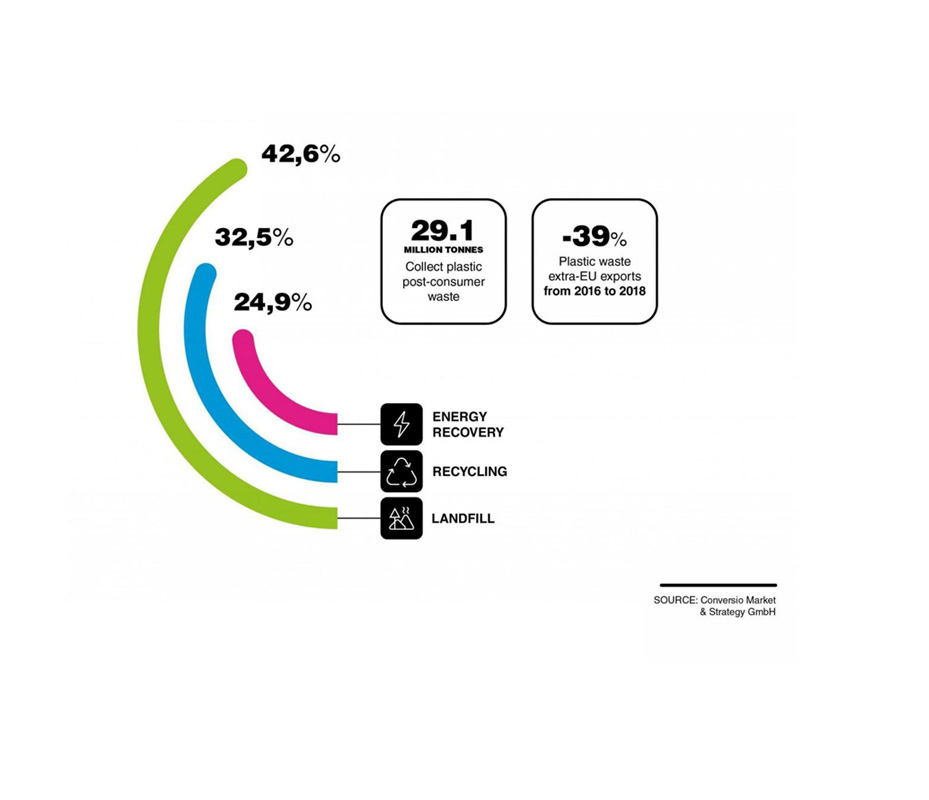
The link between FITT and plastic waste recycling follows three different paths.
Firstly, each year FITT recovers around 3,000 tonnes of PVC waste from its own production through grinders and micronisation processes within the plants. Waste therefore becomes a new resource that is put back into the production cycle, capable of generating further value.
Secondly, every year FITT uses around 5,000 tonnes of regenerated PVC granules obtained from waste from other markets, such as the automotive and the construction sectors.
Lastly, in its new product development strategy, FITT has decided to favour materials for which active post-consumer waste supply chains already exist, such as polypropylene.
